This is my dynamic query used on search form which runs in milliseconds in SSMS roughly between 300 to 400 ms:
exec sp_executesql N'set arithabort off;
set transaction isolation level read uncommitted;
With cte as
(Select ROW_NUMBER() OVER
(Order By Case When d.OldInstrumentID IS NULL
THEN d.LastStatusChangedDateTime Else d.RecordingDateTime End
desc) peta_rn,
d.DocumentID
From Documents d
Inner Join Users u on d.UserID = u.UserID
Inner Join IGroupes ig on ig.IGroupID = d.IGroupID
Inner Join ITypes it on it.ITypeID = d.ITypeID
Where 1=1
And (CreatedByAccountID = @0 Or DocumentStatusID = @1 Or DocumentStatusID = @2 )
And (d.JurisdictionID = @3 Or DocumentStatusID = @4 Or DocumentStatusID = @5)
AND ( d.DocumentStatusID = 9 )
)
Select d.DocumentID, d.IsReEfiled, d.IGroupID, d.ITypeID, d.RecordingDateTime,
d.CreatedByAccountID, d.JurisdictionID,
Case When d.OldInstrumentID IS NULL THEN d.LastStatusChangedDateTime
Else d.RecordingDateTime End as LastStatusChangedDateTime,
dbo.FnCanChangeDocumentStatus(d.DocumentStatusID,d.DocumentID) as CanChangeStatus,
d.IDate, d.InstrumentID, d.DocumentStatusID,ig.Abbreviation as IGroupAbbreviation,
u.Username, j.JDAbbreviation, inf.DocumentName,
it.Abbreviation as ITypeAbbreviation, d.DocumentDate,
ds.Abbreviation as DocumentStatusAbbreviation,
Upper(dbo.GetFlatDocumentName(d.DocumentID)) as FlatDocumentName
From Documents d
Left Join IGroupes ig On d.IGroupID = ig.IGroupID
Left Join ITypes it On d.ITypeID = it.ITypeID
Left Join Users u On u.UserID = d.UserID
Left Join DocumentStatuses ds On d.DocumentStatusID = ds.DocumentStatusID
Left Join InstrumentFiles inf On d.DocumentID = inf.DocumentID
Left Join Jurisdictions j on j.JurisdictionID = d.JurisdictionID
Inner Join cte on cte.DocumentID = d.DocumentID
Where 1=1
And peta_rn>=@6 AND peta_rn<=@7
Order by peta_rn',
N'@0 int,@1 int,@2 int,@3 int,@4 int,@5 int,@6 bigint,@7 bigint',
@0=44,@1=5,@2=9,@3=1,@4=5,@5=9,@6=94200,@7=94250
This sql is formed in C# code and the where clauses are added dynamically based on the value the user has searched in search form. It takes roughly 3 seconds to move from one page to 2nd. I already have necessary indexes on most of the columns where I search.
Any idea why would my Ado.Net code be slow?
Update: Not sure if execution plans would help but here they are:


